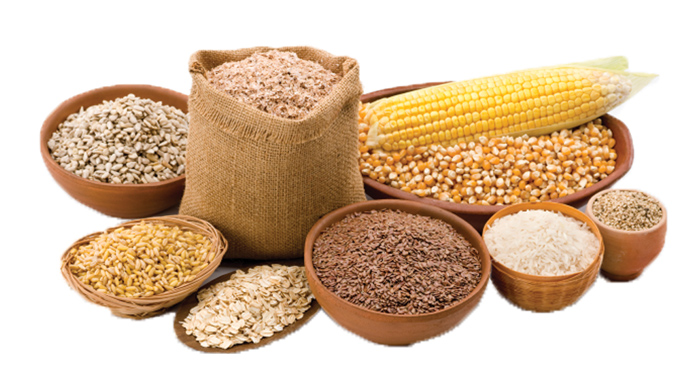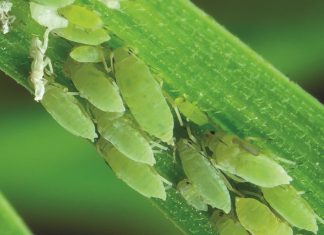
As global policy conversations continue to shine the spotlight on sustainability, the scope of these discussions also focusses on agriculture, particularly on how to transform food systems with more sustainable methods of production.
The growing demand to produce enough food to feed billions of people, is a challenge that producers will continue to face in the coming years, especially with looming threats triggered by climate change. Furthermore, there is a growing expectation that these substantial increases in yield be achieved through sustainable farming practices that optimise the use of natural resources like soil and water, using less agricultural inputs, while preserving the environment and extracting the most out of existing agricultural land.
Innovations in plant science have significantly contributed to transforming the efficiency of food production since the mid-20th century. However, this is not going to be enough to help us meet our global food security and sustainability targets as required by the United Nation’s millennium development goals. So how then do we produce more with less? Thankfully, our food systems can take advantage of decades of innovation and hard work from producers, agronomists, plant breeders, scientists and others who, through combined efforts, continue to deliver new technologies to help make agriculture more sustainable. One of these ground-breaking technologies is genome editing, an advanced breeding tool for both plants and animals, which is being touted for its enhanced potential to feed the world, protect the planet and mitigate climate change.
What are genome editing tools?
Genome editing has emerged in the last few years as an additional tool in the breeding toolbox and is successfully used to alter crop genomes with greater precision. These tools encompass a range of diverse molecular techniques that are used to accelerate crop improvement with greater precision and predictability than conventional crossbreeding, and impressive results can often be achieved without the need to add ‘foreign’ genes. In such cases, targeted genes within the plant’s own genome are edited, giving instructions to the plant to produce the desired trait.
In the gene-editing process, scientists use molecular tools, such as CRISPR (clustered regularly interspaced short palindromic repeat) to make targeted edits to the plant’s native genome for crop improvement. Gene editing’s precision in targeting almost any desired location in the genome is one of its biggest advantages over other plant breeding methods. In many cases, the genetic changes that are introduced through gene editing are no different from changes achieved through traditional breeding methods or even mutations that occur naturally in plants over time. The precision and efficiency of genome editing tools enable plant breeders to successfully achieve desired trait improvements in crops in a matter of years instead of decades.
Improving the sustainability of agriculture
Even though genome editing technologies have only been around in the last decade, its outstanding potential to make agri-food production systems more sustainable and resilient is rapidly gaining traction. With a surge in gene editing research applications across the globe looking at trait improvements in diverse food crops, the technology is expected to deliver solutions that help produce larger amounts of healthier and more nutritious food without the expansion of agricultural land. The versatility of genome editing tools and their various applications hold great promise to not only help producers reduce their use of resources and inputs, but also to deliver better products for consumers.
Reducing water use and withstanding temperature extremes
Genome editing technology is being used to develop crops that use water more efficiently when they grow. Scientists have successfully demonstrated that targeted changes to gene expression in tobacco resulted in plants with up to 25% better water use efficiency, that is less water absorption from the soil. These successes are now being replicated in important food crops such as maize and soybeans. As severe droughts become a common occurrence due to changing climates, genome editing applications are also targeting drought-related genes to improve the ability of crops to thrive during prolonged drought conditions and extremes in temperature. Research is progressing well in various cereal crops such as maize, rice and wheat as well as traditional crops such as sorghum, yams, cowpea and bananas.
Making crops more resilient
Unpredictable weather patterns are making pests and diseases more amenable to establish in areas or regions that were previously uninhabitable. Genome editing tools are being used to make food crops hardier and more resilient by boosting the inherent immunity of crops to better resist attacks by targeted pests and diseases. Advances in this regard include addressing fungal and disease resistance in various horticultural crops as well as boosting resistance to emerging pests in important food staples and indigenous crops. By curbing crop damage and losses due to pests and diseases, gene editing tools indirectly help improve the sustainability of farming systems by minimising the waste of resources and inputs used for production.
 Minimising the environmental impact of production
Minimising the environmental impact of production
Another impactful area is the deployment of the technology to improve nitrogen use efficiency in plants and their uptake of other minerals and nutrients. Nitrogen is an essential nutrient for crop growth. However, the production and use of nitrogen-enriched fertilisers are known to be a source of greenhouse gas emissions. Research efforts with gene editing include enabling improvements in maize to access nitrogen directly from the atmosphere, thus reducing the need for fertilisers. Targeted edits to soil microbial populations are also being investigated to enhance their ability for nitrogen production and absorption in the soil.
Other innovative solutions addressing environmental impacts include designing plants that remove excess carbon from the atmosphere; editing for larger root systems in crops to effectively capture carbon and store it in the soil for longer periods; and targeted improvements in cover crops such as pennycress varieties with high oleic acid content – an ideal source for conversion into low carbon biofuels, while also protecting the soil from nutrient depletion and erosion.
Improving the health and wellbeing of farm animals
With changing food consumption patterns, pressure is also mounting to increase agricultural productivity when it comes to animal-based foods and meat products. Even though the genome editing landscape has been dominated by improvements in crop plants, there have also been significant breakthroughs with technology applications in farm animals. The technology is being used to improve animal productivity (milk, meat and fibre production), boost livestock breeding and genetics, enhance animal welfare, breed disease-resistant animals and suppress pests and invasive species that threaten livestock. The diversity and rapid integration of genome editing tools into both plant and animal breeding systems mean that more solutions are in the pipeline, giving producers a fighting chance to overcome adverse conditions, while sustainably producing enough food that is safe, affordable and nutritious.
Addressing consumer sustainability values
The potential benefits of genome editing tools to provide sustainable farming solutions are obvious. But sustainability is not only confined to the farm gate, it is an issue that resonates with consumers as well. These days consumers generally want to know more about how and where their food is produced, and these values are reflected in their food choices and product selection. But consumers as end users also have a responsibility when it comes to excessive food waste, which counters sustainability principles and practices.
According to a report by the United Nations, a third of all food produced for human consumption is either prematurely discarded by consumers or lost due to inefficiencies in the food supply chain, contributing approximately 8% of total greenhouse gas emissions. This amount of food waste and loss has a significant impact on sustainability as it means that all the resources that went into producing the food are also wasted. Genome editing technologies are already helping to remedy this situation by bringing food products to market that stay fresher for longer, including making certain fruits and vegetables more resistant to browning or bruising. Examples of genome-edited food products in the market with enhanced quality traits include non-browning apples and mushrooms as well as non-bruising potatoes.
Realising the potential of the technology
Genome editing is rapidly becoming one of the more useful plant breeding technologies. The technology’s precision, flexibility and relatively low cost mean that innovative solutions, specifically addressing the sustainability of agricultural systems as we know it, will soon become a reality for producers worldwide. Despite the potential of the technology to produce larger amounts of healthier and more nutritious food while countering the climate and environmental threats to agriculture, the realisation of the technology’s success hinges on consumer acceptance and government regulatory policy.
While there may be positive progress on these two issues in other regions of the world, the recent regulatory decision for genome-edited technologies and derived products in South Africa is a notable departure from regulatory approaches that are being followed globally. Only time will tell whether the promises of genome editing are fulfilled for South African producers and consumers and whether they too will be able to access the technology and reap the benefits to improve the resilience and sustainability of agri-food production systems.




























